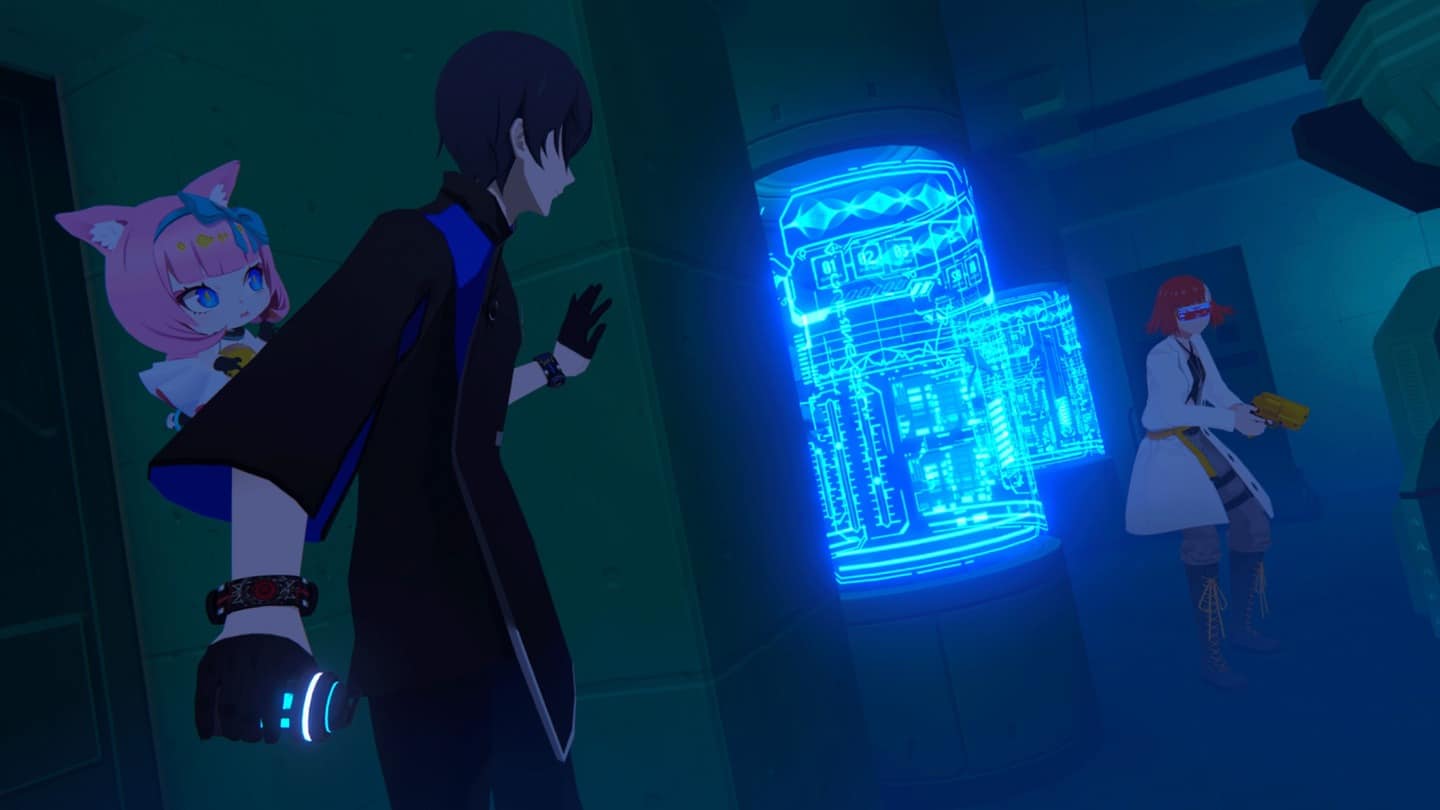[]Set within an artificial marine city called Astrum Close, Dyschronia takes a similar approach to Altdeus, sheltering its residents from the wider world. Uniting them is Augmented Dreaming (AD), which shares each citizen’s feelings across a dream state that supervisors can explore, making crime practically non-existent. It’s understandably shocking, then, when residents collectively see the murder of Professor Rumford, the city’s founder.
[]With the city thrown into lockdown, you play as Special Supervisor Hal Scion, an amnesiac who lost his memories in an experiment three years prio. Hal is tasked with leading the murder investigation and building a case, assisted by navigator robot Lily.
[]Unlike past Chronos games, routes aren’t determined by multiple choice questions. Hal has full freedom of movement plus direct object handling via motion controls, so you no longer feel like a spectator during gameplay. While several sequences require selecting conversation topics with NPCs, you’re not selecting routes through set dialogue options anymore. Whether you’re travelling across the city or picking up a chess piece, everything feels natural.
[] Uniquely, Hal can scan items to witness past events, which places you directly into the shoes of whoever’s memories he’s witnessing. This provides insights into life before Hal’s experiment and clues that assist in puzzle solving, such assafe codes or keycard combinations. On select occasions, Hal can directly alter past events and influence smaller decisions, such as granting himself access to Rumford’s PC system by briefly controlling him. It’s never anything terribly drastic, but it can open new investigative avenues.
[]While I won’t spoil specifics, the episode also contains one stealth sequence that particularly stood out. In this section, the enemy will shoot him on sight – you can withstand a few hits, but it won’t take long for them to kill you if you’re out in the open. Crouching across an enclosed space, you can distract enemies and create an escape path by throwing items in certain directions. As someone who rarely plays stealth games, this sequence was especially nerve racking. It’s another example of how Dyschronia feels much more involved than its predecessors.
[]After you’ve finished your search for evidence, you’re off to the courtroom – though you won’t be presenting evidence like in Ace Attorney. Instead, Hal must state his case through a virtual recreation of the crime scene, selecting the right evidence for each moment. Don’t worry too much about getting this wrong though – Dyschronia doesn’t penalise you for errors and the segment does an excellent job capping off the investigation.
[]
[]Despite these new changes, Dyschronia doesn’t discard its predecessor’s ideas. Time travel plays a key role once again, both in mandatory story sequences and through a pocket watch that Hal can activate at any time. Similar to Ariadne from Altdeus, specific routes require completing before additional branching paths appear using your newfound knowledge. Information from those paths automatically downloads into Lily’s digital memory bank. This means you won’t have to continuously repeat yourself and therefore also saves a lot of exposition. Once the day’s over and you’ve achieved the desired outcome, you can’t return to yesterday’s events.
[]For those after additional lore, Hal can jump into AD in any public space and initiate a counselling session with troubled residences, unlocking new memory archives once completed. This optional and fairly simple memory-based minigame sees you touching panels in a set order. Annoyingly, while you’re at a suitable distance when talking to other characters, the counselling mini-game UI always felt too close to my face. I had to move forward slightly, recenter my Quest 2 and then move back to feel comfortable.
[][]Dyschronia: Chronos Alternate – Episode 1 Review – Comfort
[]Dyschronia contains the usual range of comfort options. Hal has full freedom of movement across these environments, either through artificial locomotion or teleportation, and it also contains a hybrid option that combines them. When selected, this maps artificial locomotion to the left thumbstick and teleportation to the right. Unfortunately, there’s no setting to switch this round for left-handed players, which is disappointing.
[]Otherwise, Dyschronia lets you swap between smooth or snap camera turning. If you choose snap, a camera fade can be used to reduce potential motion sickness. An optional comfort vignette is also available when rotating the camera, with three different strength settings. You can also adjust the rotation angle for snap settings on each use and adjust the rotation speed on smooth settings.
Source
